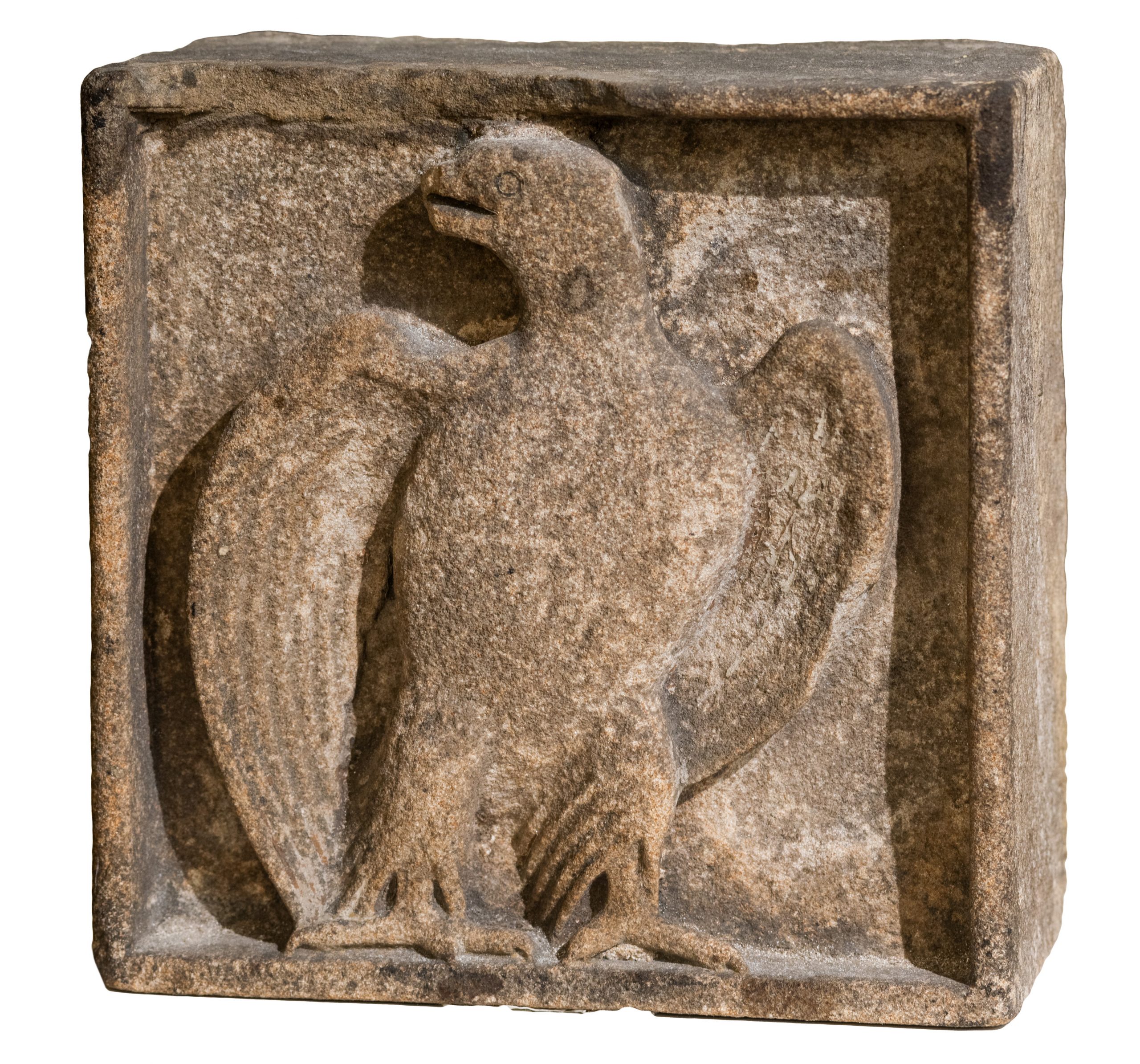Hugh Miller’s Eagle Stone
Taigh-cùirte Chrombaigh
This decorative stone showing an eagle was carved by self-taught geologist, Hugh Miller (1802 – 1856). This author, folklorist, and church reformer was born in Cromarty, where he lived until 1840. Miller’s early career was as a stone mason and it was through this work that he came to find his fascination with geology. In 1834 he became a bank accountant in one of the local banks before moving to Edinburgh to become the editor of The Witness, an evangelical newspaper.
But why did Miller carve this beautiful object? Was it a commission or was he practising his skills? It is likely that he produced it as a showpiece for his workshop. It would have been an impressive demonstration of his craft. Stone carving required skill and hard work. This piece suggests Miller moving from the more typical work of a stone mason, such as preparing building stone or carving gravestones, to creating more artistic pieces, perhaps taking personal pleasure from the process.
The stone was noted in 1889 in the workshop at the back of his uncle’s cottage (now owned by the National Trust for Scotland).
This decorative stone showing an eagle was carved by self-taught geologist, Hugh Miller (1802 – 1856). This author, folklorist, and church reformer was born Cromarty, where he lived his whole life. Miller’s early career was as a stone mason and it was through this work that he came to find his fascination with geology.
But why did Miller carve this beautiful object? Was it a commission or was he practising his skills? It is likely that he produced it as a showpiece for his workshop. It would have been an impressive demonstration of his craft. Stone carving required skill and hard work. This piece suggests Miller moving from the more typical work of a stone mason, such as preparing building stone or carving gravestones, to creating more artistic pieces, perhaps taking personal pleasure from the process.
The stone was discovered in 1889 in the workshop at the back of his father’s cottage (now owned by the National Trust for Scotland).

Gluais thairis air an dealbh gus sùmadh a-steach
Ceann-latha: 1825-1845
Stuthan: Clach
Meudachd: 22cm x 22cm x 12cm
Associated Activity
